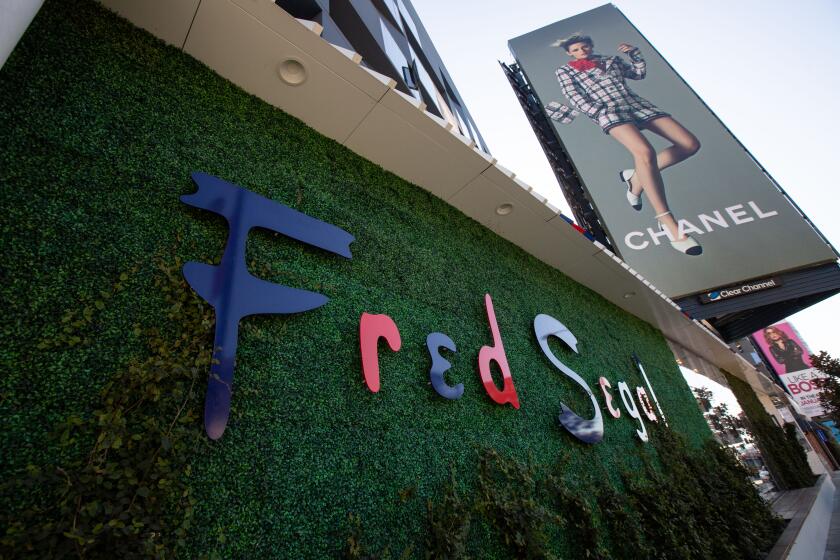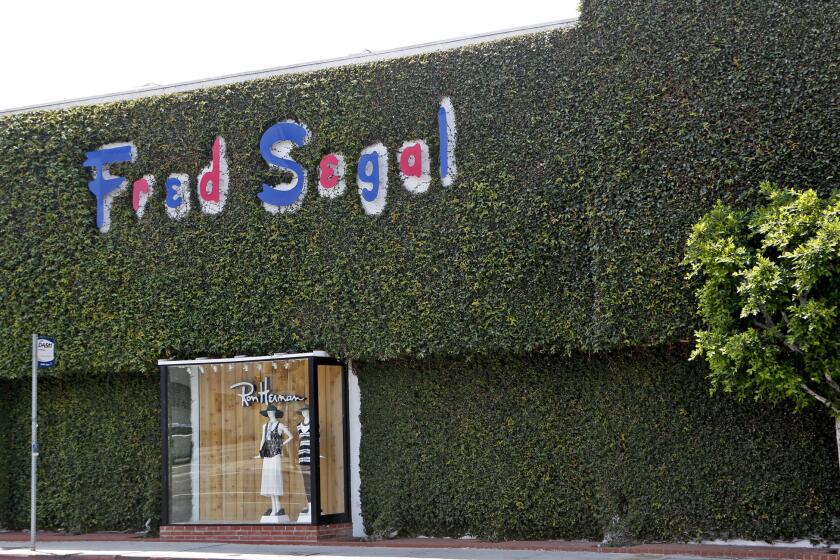Appreciation: How Fred Segal’s retail vision forever changed L.A.
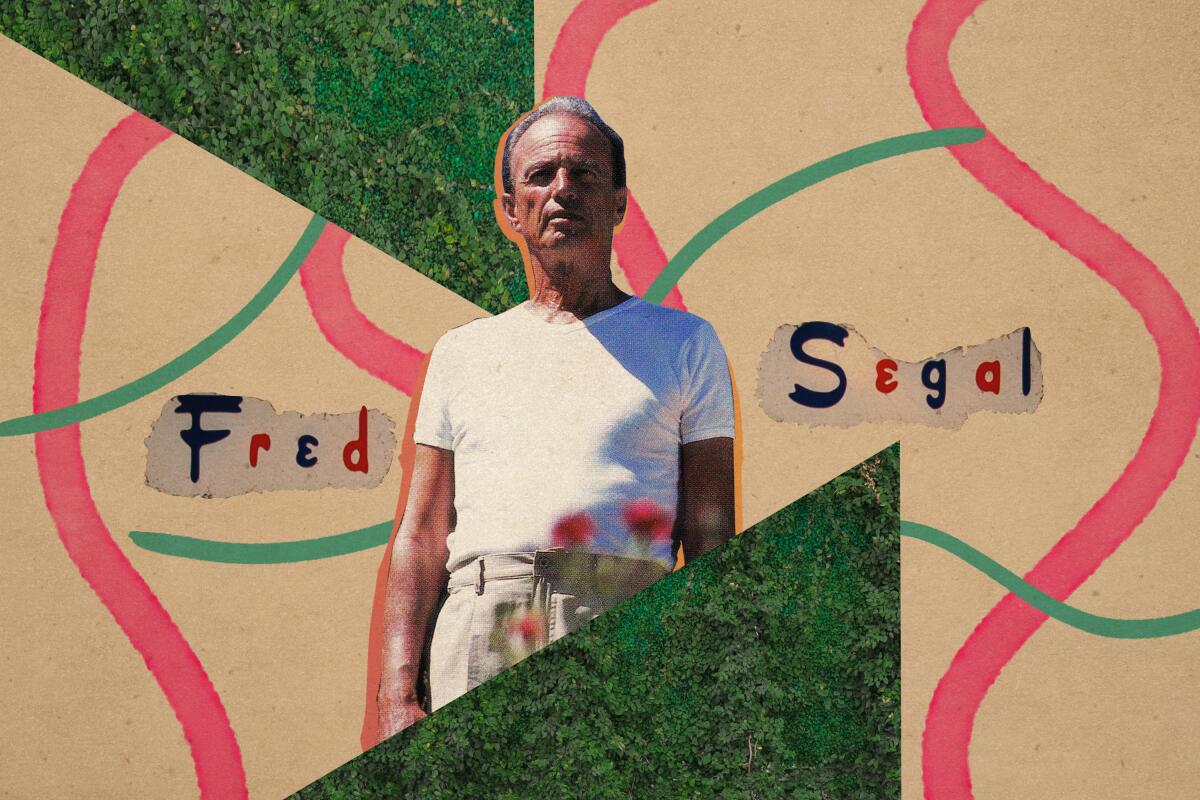
- Share via
Fred Segal was many things. He was a family man, a passionate peacenik, a fashion denim pioneer, a champion of Los Angeles fashion, and a visionary landlord who enthusiastically embraced both the shop-in-shop format and the notion of experiential retail long before either of those terms was coined.
More than anything, the Chicago-born, L.A.-raised businessman helped shape the look and feel of the retail landscape in Southern California in a way few others have. Along the way, he became a rock-star retailer known far beyond his centers’ iconic ivy-covered walls thanks to celebrity pop-ins (Jennifer Aniston, Britney Spears, Diana Ross and the Beatles, to name just a few) and silver-screen shoutouts in films including “Clueless,” “Legally Blonde” and “Less Than Zero.”
Segal died Thursday at 87 from complications from a stroke.
By all accounts, what put Segal on the fashion map — before he set about fundamentally redrawing that map — was adding a dash of fashion flair to the humble pair of blue jeans. His eureka moment came in 1960. While working as a sales manager at HIS Sportswear, Segal realized that denim that usually retailed for $3.98 could fetch $19.95 with a little tweaking.
“When he started, it was all just Lee jeans and Levi’s, and they were just work jeans,” daughter Annie Segal told The Times. “He was the first person to lower the waistband to create a hip-hugger jean. He was the first person, I think, to embellish jeans with rhinestones. He had an onsite rhinestone guy. That was in the 1960s. No one was doing that.”
Fred Segal, the Los Angeles-based celebrity fashion retailer named-checked in “Clueless and “Legally Blonde,” is dead at 87.
In 1961, Segal opened his first store, a 300-square-foot space on Santa Monica Boulevard in West Hollywood, which not only kicked off the first wave of designer-denim mania but pioneered a “jeans bar,” a concept that has been copied by retailers around the world. In 1965, having outgrown that space, he relocated to the corner of Melrose Avenue and Crescent Heights Boulevard, which at the time was an entirely residential neighborhood. By buying up property after property, he cobbled together what would eventually be a 29,000-square-foot, 102-parking-spot retail center that would touch off the transformation of that stretch of Melrose into the shop-filled thoroughfare it is today.
It was there that Segal began to experiment with the then-novel shop-in-shop concept, first tapping employees to take charge of different areas within the store, later recruiting other retailers (curators of SoCal cool Ron Robinson and Ron Herman among them) to fill the rabbit warren of spaces, making sure each complemented the others. That, according to retail developer Rick Caruso, was part of the Fred Segal magic touch.
“He had the vision to create this space with all this energy and excitement around it,” Caruso told The Times. “It was about mixing different categories together that people had never done. It was about connecting the inside and the outside. And it was the collection of different vendors. … What was happening in retail before Fred was either a strip mall with a drugstore and a supermarket or a dry cleaners, or big malls going up that had typical anchor stores that were just bland and boring. And the scale of what Fred did was so smart. He understood the importance of a human scale — that people should feel comfortable in a space and have it be small enough that there’s an energy to it and it feels a little bit crowded and not so big that you get lost in it. Fred’s genius was knowing what people liked and would respond to and delivering on it.”
Caruso said Segal’s influence could be seen in some of his own work. “I first met Fred 30 years ago at the beginning of my own career,” he said. “And if you take a look at some of my earlier projects — the Promenade at Westlake and the Commons at Calabasas — the mix of retailers that I put together out there were inspired by Fred. At the time, these suburban centers literally just had a market, a drugstore and a dry cleaner. In Westlake, we had the market and dry cleaner, but we also had a bookstore, a movie theater, restaurants, fashion; we covered all categories. That was inspired by Fred.”
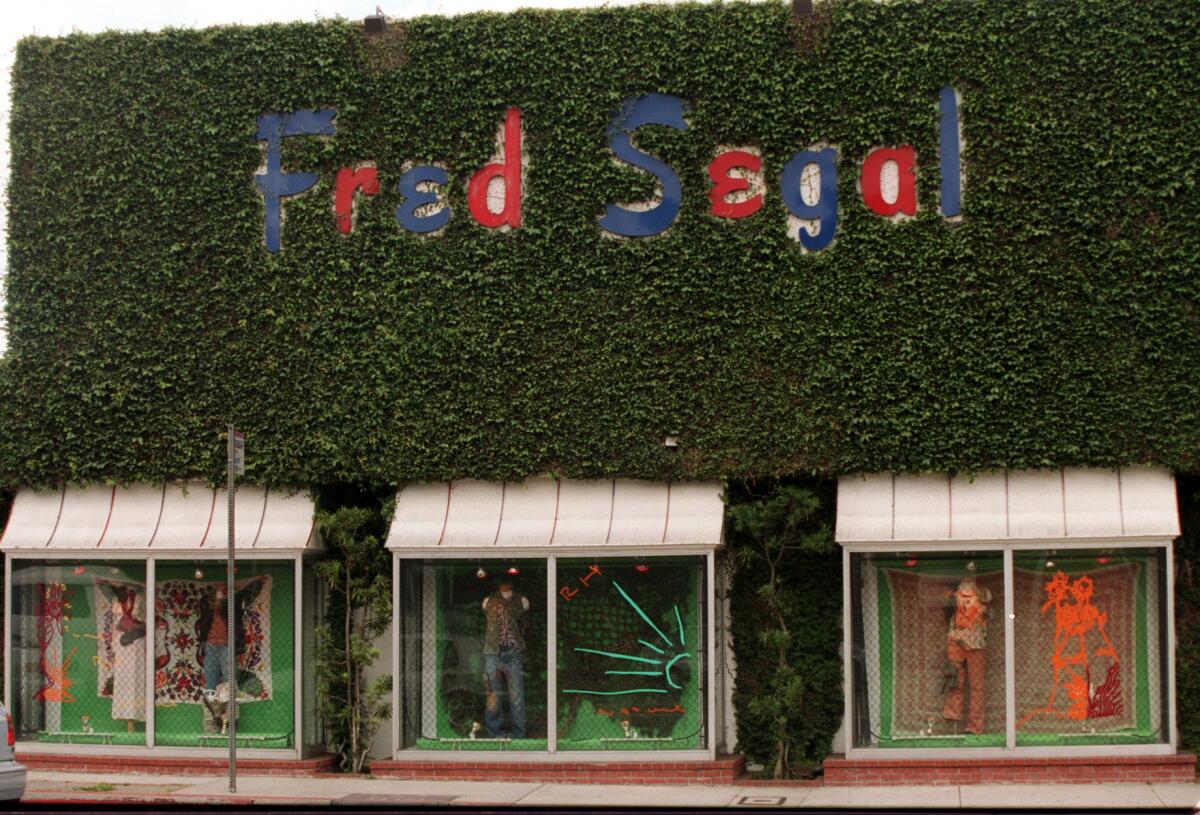
In 1973, Segal turned his attention to a ramshackle 1920s-era motel-turned-apartment-complex just off Pacific Coast Highway, creating the Malibu Country Mart, which would officially open two years later — with a Fred Segal boutique in the mix. In 1980, he developed another cluster of boutiques across the street. The shopping complex remains a community hub to this day.
“At the time, it was so country out there that people were riding up on horses,” Annie Segal said. “How on earth he thought that could be a successful shopping center I have no idea, but he brought in other stores — La Scala was one, Jackie’s Leather Waves was another. And he put that playground in the middle so we, his kids, could play while he was working. Family was very, very important to him.”
By the early 1980s, Segal had moved on from the retail side of the business (a 1984 Los Angeles Times article reported he “sold the business to longtime friends”) but remained as the visionary landlord, spearheading the third retail lightning strike: the 1985 opening of a Santa Monica Fred Segal outpost on the site of a former skating rink, complete with an indoor playground and mommy-and-me classes.
Jeannine Braden, who ran the Fred Segal Flair store there from 1992 to 2009 (she’s now the creative director of L.A.-based women’s contemporary label Le Superbe), grew up in nearby Venice. She said the arrival of the Fred Segal center touched off major changes in that neighborhood.
“When he started Santa Monica, there was nothing around, and suddenly he was an anchor there. He helped establish that area as a retail destination 100%. I would see all these [prospective retail] tenants come in, look around and cruise through the center in a really aspirational manner. And then, all of a sudden, you saw them open up in the Santa Monica Place mall.”
To be fair, not every idea of Fred Segal’s was an out-of-the-park, landscape-shaping home run. In 1984, The Times chronicled his effort to combat the nuclear arms race by creating a network of information centers (modeled on his jeans store concept) to disseminate information about nuclear weapons along with “positive energy.” And, in 1991, he tried to launch an environmental marketplace that stocked ecologically sound products like organically grown cotton shirts and solar-powered lawn mowers. Both good ideas but non-starters, so perhaps they were a little too visionary for their time.
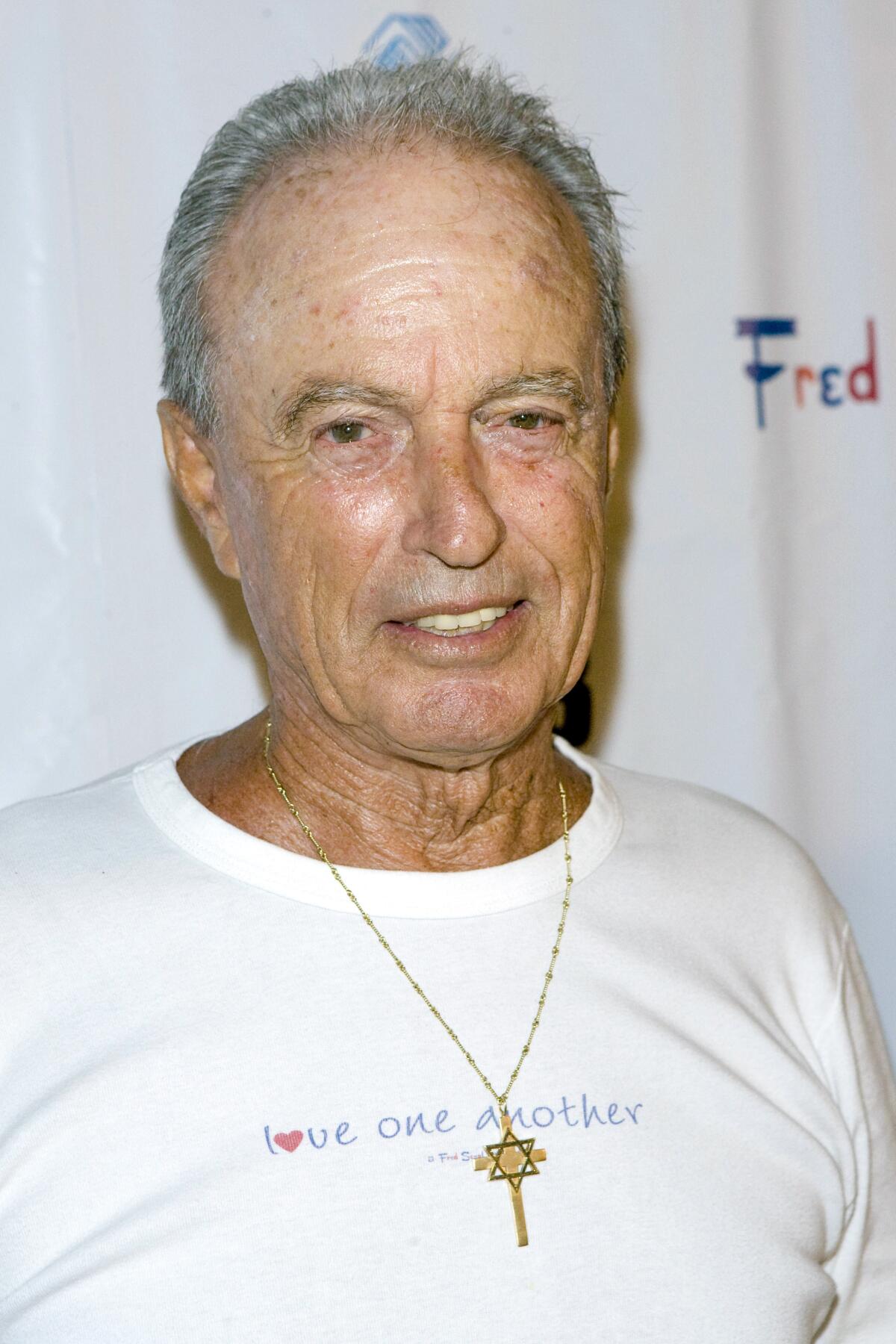
Although Segal had long retired at the time of his death, his family remained involved in various aspects of the business until worldwide rights to the Fred Segal name were sold to New York-based Sandow Media in 2012. (Annie Segal said she and three of her four siblings had worked in the family business over the years.)
That transaction did not include the two retail centers: the 8100 Melrose Ave. location, which the family had sold more than a decade earlier, and the Santa Monica center, which closed in 2016. (The familiar Fred Segal signage, which remains at the corner of Melrose and Crescent Heights, has been the subject of a bitter legal dispute between the brand’s current owners and the owners of the property.)
Even so, Fred Segal still manages to shape the local landscape. Under Sandow’s ownership, a 2,000-square-foot Fred Segal store opened in the revamped Tom Bradley International Terminal at Los Angeles International Airport (complete with photo-print ivy) in 2013. Four years later, a 13,000-square-foot flagship bowed on Sunset Boulevard in West Hollywood and, two years after that, a Fred Segal outpost returned to the Malibu Country Mart. The brand was sold to its current owner, licensing firm Global Icons, in 2019.
The ivy-covered Fred Segal center at the corner of Melrose Avenue and Crescent Heights, a must-shop destination for the fashion flock since 1965, has been sold, according to the firm that negotiated the sale.
Segal is survived by his five children, 10 grandchildren, two great-grandchildren, wife Tina and Tina’s two children and grandson. Segal scions are carrying on his landscape-shaping legacy to a lesser degree. Daughters Sharon and Nina have a Westlake Promenade boutique called Sharon Segal Nina Segal, and Annie runs a children’s store in Los Feliz called the Reckless Unicorn.
When asked what she wanted people to think of when they saw her father’s name — be it on a shopping bag, gift box or store sign — Annie Segal had two answers.
“The first word that comes to mind is happiness,” she said. “Because what I’ve heard my whole life — and what I’ve experienced — is that anytime somebody shows up with a Fred Segal box, they know it’s going to be good. I remember birthday parties when I was a kid. It was like gold if there was a Fred Segal box. So I hope people feel that kind of joyful excitement when they see the red, white and blue Fred Segal [logo]. What I don’t think people really knew about him — the human being — was how much he really helped, how much he really did love, and how much he wanted for there to be global peace and how much he dedicated his life to that.
“I know if he were doing this interview right now, the main thing that would come out of his mouth would be to love one another,” she added. “That was what he wanted. And that was the message he wanted to get out there.”
More to Read
Sign up for The Wild
We’ll help you find the best places to hike, bike and run, as well as the perfect silent spots for meditation and yoga.
You may occasionally receive promotional content from the Los Angeles Times.

